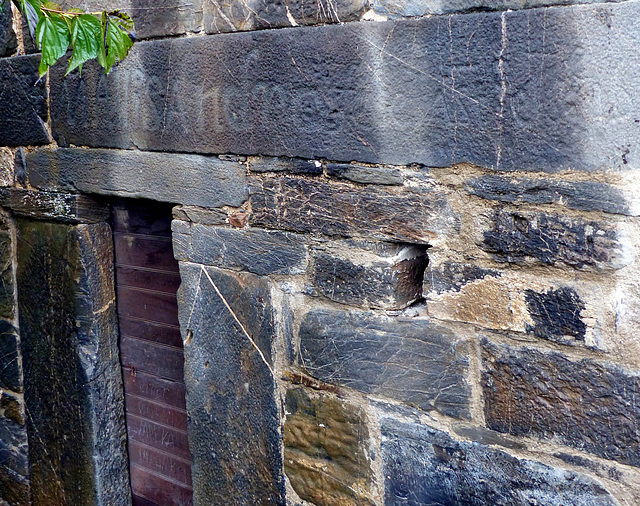Valle de Rostino - Santa Maria di Riscamone
Valle de Rostino - Santa Maria di Riscamone
Valle de Rostino - Santa Maria di Riscamone
Valle de Rostino - Santa Maria di Riscamone
Valle de Rostino - Baptisterium San Giovanni Batti…
Valle de Rostino - Baptisterium San Giovanni Batti…
Valle de Rostino - Baptisterium San Giovanni Batti…
Lucciana - Santa-Maria-Assunta
Lucciana - Santa-Maria-Assunta
Lucciana - Santa-Maria-Assunta
Lucciana - Santa-Maria-Assunta
Lucciana - Santa-Maria-Assunta
Lucciana - Santa-Maria-Assunta
Lucciana - San Parteo
Lucciana - San Parteo
Murato - San Michele de Murato
Murato - San Michele de Murato
Murato - San Michele de Murato
Murato - San Michele de Murato
Murato - San Michele de Murato
Murato - San Michele de Murato
Murato - San Michele de Murato
Murato - San Michele de Murato
Altiani - San Giovanni Battista
Altiani - San Giovanni Battista
Aléria - Pizza
Col de Bavella - Aiguilles de Bavella
Col de Bavella - Notre Dame des Neiges
Mela - Santa Maria Assunta
Mela - Santa Maria Assunta
Sainte-Lucie-de-Tallano - St. Roch
Corsica - Sartène
Corsica
Corsica
Meinerzhagen - Jesus-Christus
Meinerzhagen - Jesus-Christus
Meinerzhagen - Jesus-Christus
Meinerzhagen - Jesus-Christus
Meinerzhagen - Jesus-Christus
Meinerdingen - St. Georg
Meinerdingen - St. Georg
Bispingen - Ole Kerk
Bispingen - Ole Kerk
Bispingen - Ole Kerk
Bispingen - Ole Kerk
Location
Lat, Lng:
You can copy the above to your favourite mapping app.
Address: unknown
You can copy the above to your favourite mapping app.
Address: unknown
Keywords
Authorizations, license
-
Visible by: Everyone -
All rights reserved
-
155 visits
Altiani - San Giovanni Battista


The island of Corsica is one of the 18 regions of France. It was colonized the Carthaginians, the Greeks, the Etruscans and the Romans. After the Roman empire collapsed, Corsica got invaded by the Vandals and the Ostrogoths. For a short while the island belonged to the Byzantine Empire, then the Franks granted the island to the Pope, in the early 11th century Pisa and Genoa together freed the island from the threat of Arab invasion. The island came, just like neighbouring Sardinia, under the influence of the Republic of Pisa, later it belonged to Genua for centuries. In 1729 the Corsican fight for independence from Genoa began. After 26 years of struggle the independent Corsican Republic was proclaimed in 1755, but in 1769, when the island was conquered by France.
As the areas near the coast have over centuries have been threatened by attacks and raids of pirates (or sarazens or..) many old hamlets and dwellings are wide inland, high in the mountains.
The chapel San Giovanni Battista is a Romanesque building of the 10th century located next to the Genoese bridge called "Pont d'Altiani", spanning over the Tavignano river. The church served the parish of Rogna, but Annie Arnoux-Gabrielli, author of "Eglises Romanes des Corse", claims that once a second building existed here, erected by monks (like the chapel), who came to the area for evangilisation. These monks provided for maintenance and security for a medieval bridge and accommodated travelers for the night.
The chapel got altered many times and seems to be locked since ages. There are many inscriptions or graffiti around the building. I could only read a name, but Annie Arnoux-Gabrielli could decipher the complete inscription "A.ALISANDRO LA FIT EN 1600". So obviously Mr. Alisandro did a brilliant repair job and installed a new lintel. He must have been pretty proud,
As the areas near the coast have over centuries have been threatened by attacks and raids of pirates (or sarazens or..) many old hamlets and dwellings are wide inland, high in the mountains.
The chapel San Giovanni Battista is a Romanesque building of the 10th century located next to the Genoese bridge called "Pont d'Altiani", spanning over the Tavignano river. The church served the parish of Rogna, but Annie Arnoux-Gabrielli, author of "Eglises Romanes des Corse", claims that once a second building existed here, erected by monks (like the chapel), who came to the area for evangilisation. These monks provided for maintenance and security for a medieval bridge and accommodated travelers for the night.
The chapel got altered many times and seems to be locked since ages. There are many inscriptions or graffiti around the building. I could only read a name, but Annie Arnoux-Gabrielli could decipher the complete inscription "A.ALISANDRO LA FIT EN 1600". So obviously Mr. Alisandro did a brilliant repair job and installed a new lintel. He must have been pretty proud,
- Keyboard shortcuts:
Jump to top
RSS feed- Latest comments - Subscribe to the comment feeds of this photo
- ipernity © 2007-2025
- Help & Contact
|
Club news
|
About ipernity
|
History |
ipernity Club & Prices |
Guide of good conduct
Donate | Group guidelines | Privacy policy | Terms of use | Statutes | In memoria -
Facebook
X

Sign-in to write a comment.